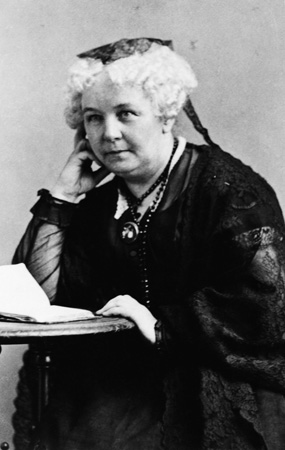On July 19, 1848, hundreds of women (and a few men) met in Seneca Falls, New York for the first Women’s Rights Convention, led by Elizabeth Cady Stanton and Lucretia Mott. Considered the official beginning of the modern American feminist movement, the Seneca Falls Convention included two days’ worth of meetings attended by around 300 women and men. And Frederick Douglass, the only African-American attendee.
In the decades leading up to Seneca Falls, Middle and Upper Class women across the United States were aware of a few significant differences between themselves and their working, educated husbands: like the fact that they were allowed to vote and own property. By the middle of the 19th century, a group of Quaker women (and some non-Quakers, like Lucretia Mott) determined that they would address the state of inequality between men and women in terms of both daily interaction and inalienable rights. Spreading an invitation through personal visits and newspapers, a smaller group of women set up a two day event in Central New York. Prior to the convention, the smaller group (and a couple of their husbands) drafted a Declaration of Sentiments, in which they addressed the current condition of women in the household and their legal rights. This was where the right to vote was first mentioned on paper.
 While Lucretia Mott was definitely the draw, as a known orator and writer, it was Elizabeth Cady Stanton, opens a new window who was the true ringleader. It was she who threw that whole “right to the elective franchise” bit into the Declaration of Sentiments.
While Lucretia Mott was definitely the draw, as a known orator and writer, it was Elizabeth Cady Stanton, opens a new window who was the true ringleader. It was she who threw that whole “right to the elective franchise” bit into the Declaration of Sentiments.
The two-day meeting included talks about homelife, property, abolition, personal responsibility, and the moral rights of women everywhere. There was a public reading of the Declaration of Sentiments, a vote to adopt it, and a signing. Speeches were made, news articles were written, and opinions expressed.
While the meeting may seem small potatoes in the long run, particularly in regards to Women’s Suffrage, which didn’t occur for another 80 years, it was a pretty big deal to those who were affected by it. It led to several more regional conventions being held, some attended by Lucretia Mott, and a new standard being held in regards to the continued availability of personal, moral, and political rights of women in the nineteenth century and onward.
Read more about the Seneca Falls Convention of 1848
Seneca Falls Convention in Academic OneFile
Seneca Falls Convention in U.S. History in Context
Links updated 2020.12.24


